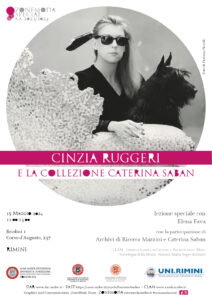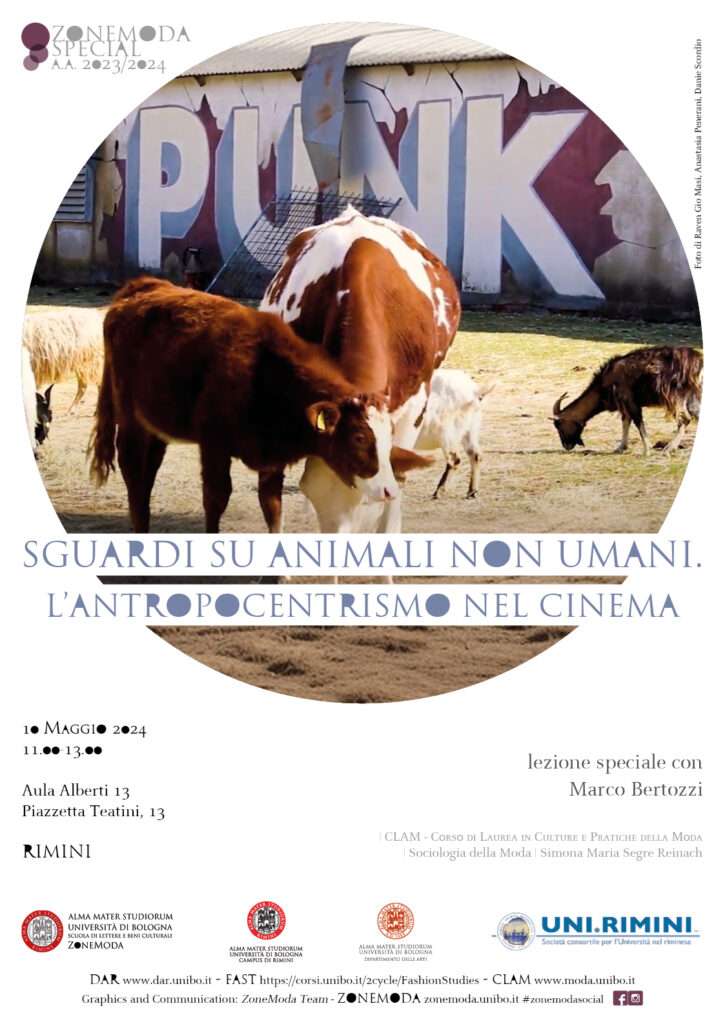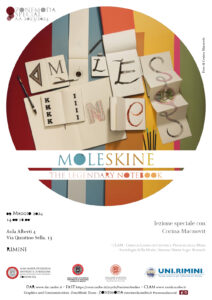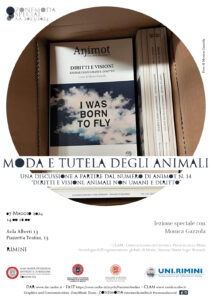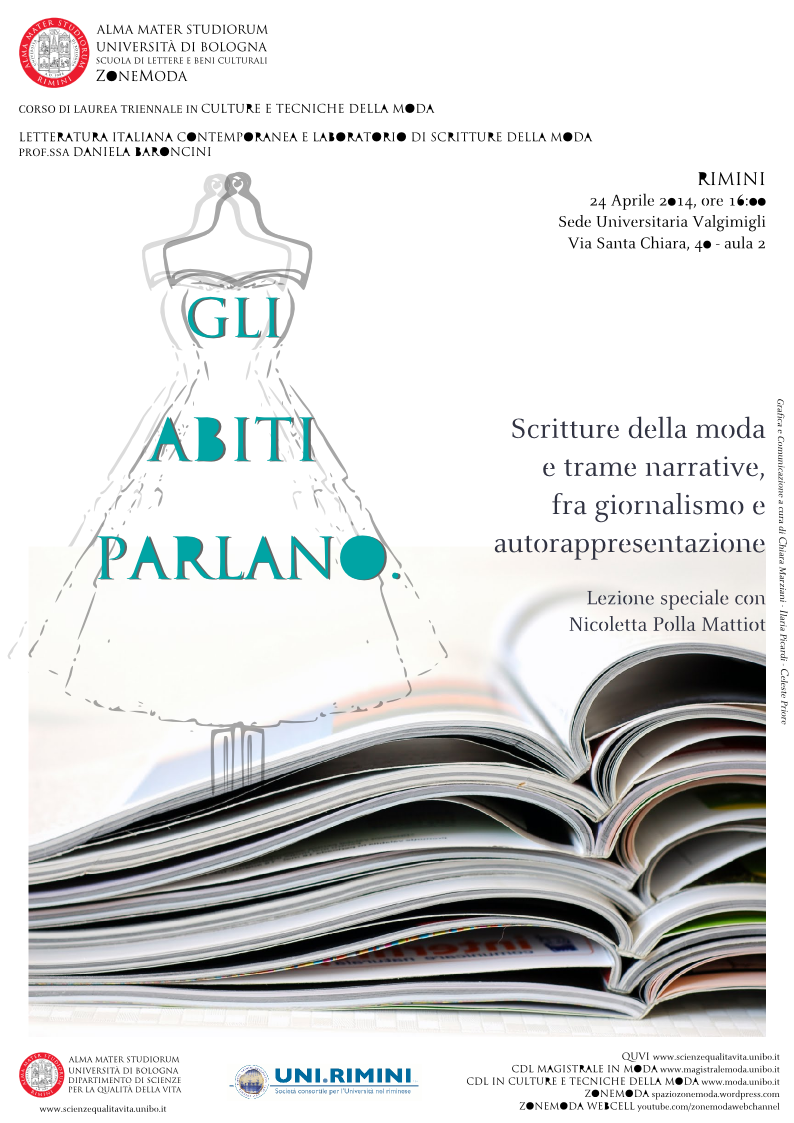
Gli abiti parlano. Scritture della moda e trame narrative, fra giornalismo e autorappresentazione
Foto di Virginia Angius
RIMINI
24 aprile 2014, ore 16.00
Sede universitaria Valgimigli
via S.Chiara, 40 – Aula 2
Docente: Daniela Baroncini
GLI ABITI PARLANO
Scritture della moda e trame narrative, fra giornalismo e autorappresentazione
Lezione speciale con Nicoletta Polla Mattiot
Abiti parlati e abiti parlanti
C’è un abito parlante – che attraverso i suoi codici dice ciò che vuole dire – e un abito parlato, ovvero descritto, illustrato, raccontato dai professionisti della moda. Nicoletta Polla Mattiot introduce così il pensiero del grande sociologo francese Roland Barthes in apertura della lezione speciale “Gli abiti parlano”, organizzata all’interno del corso di Letteratura Italiana Contemporanea e Laboratorio di Scritture della Moda. La giornalista e scrittrice, dall’alto della sua ricca e polimorfa carriera, è riuscita a presentare agli studenti il lato più sensibile e profondo della Moda.
In un mondo considerato comunemente effervescente e chiassoso, il linguaggio vestimentario può arrivare a toccare le più intime vibrazioni dell’anima. E la scrittura ne diviene il mezzo di espressione per eccellenza, costruendo attorno all’abito una vera e propria mitologia: “Gli abiti parlano e straparlano, tessono ricordi, intrecciano vissuti” sottolinea la nostra ospite, giocando a un doppio livello di metafore, dove il filo che cuce il capo è al contempo il filo di una lunga storia, la quale si compone a sua volta di più e diverse narrazioni: quella di chi ha ideato il capo, di chi l’ha realizzato, rifinito, indossato. Ecco allora che la narratività degli abiti passa attraverso il loro intrinseco vissuto: di questo il vintage ne ha fatto tesoro, ripescando tasselli dal passato per ritesserli nello scorrere del presente.
Continuando poi ad attingere dalle nozioni di Barthes, possiamo affermare che il vestito non nasconde né mostra: allude; non opprime ma valorizza, non esibisce ma semantizza, andando ad abbracciare assieme al corpo, tutta la persona e i suoi rapporti con la società. Perché il vestito è una pura forma di autorappresentazione, rivela ciò che siamo, ciò che vorremmo essere, sembrare, comunicare: possono esistere abiti corazza, abiti maschera, abiti rivelatori o disvelanti, abiti come simbolo di appartenenza a un gruppo o tribù; basti pensare agli stili street-fashion o alle sottoculture – in primis giapponesi tra Cosplayer e Lolite – dove ogni singolo dettaglio risponde a codici predeterminati, racchiudendo in sé un forte potere metamorfico. Colori e forme esprimono e trasformano la nostra identità: attraverso ciò che indossiamo si manifesta la nostra anima, così come attraverso la descrizione di un abito all’interno di un romanzo letterario possiamo cogliere l’anima dei suoi personaggi. Ne sono esempio le letture di Amelie Nothomb (“Barbablù”, Voland 2012) e di Viola di Grado (“Settanta acrilico trenta lana”, ed. E/O 2001), in cui la parola scritta è in grado di tradurre al meglio le sensazioni tattili, visive e sentimentali impuntate in una stoffa. Scrivere di moda, nella varietà di generi – didascalie, interviste, recensioni – e nella verità di media d’informazione, divisi oggi tra “lo sfogliare e il postare”, non è mai un’operazione lineare e ben strutturata, poiché interagisce di continuo con l’attimo, con la fugacità dell’istante e con il già detto, il già fatto. “Scrivere di moda non significa scrivere di sé, ma attraverso di sé. Scrivere di moda è come tendere un filo, quello della propria storia.”
Cecilia Cestari – Redazione Writing For Fashion
__________________________________________
RIMINI
April 24, 2014, 16.00
Valgimigli campus
Via Santa Chiara, 40 – room 2
CLOTHES SPEAK
Fashion writings and narrative plots, between journalism and self-representation
Special lecture with Nicoletta Polla Mattiot
Speaking clothes and spoken clothes
There is a difference between speaking clothes, which say what they want to say through their own codes, and spoken clothes, or rather described, illustrated, told by the various fashion professionals. In this way, Nicoletta Polla Mattiot introduced the theory of the great Francis sociologist Roland Barthes on occasion of the special lecture “Clothes talk”, organised by the academic course in Italian Contemporary Literature and Fashion Writing Laboratory. The journalist and writer, who can vaunt a rich and versatile career, presented to students the most deep and sensible aspect of Fashion.
In an effervescent e noisy world, as the common thinking usually defines it, the clothing language is able to touch the most intimate vibrations of soul. And the writing becomes the best medium of expression of that, creating a real mythology around clothing: “Clothes talk and talk, weave memories, intertwine pasts” our guest highlighted, using a double level of metaphors. In fact, the yarn that stitches the dress, at the same time it is the yarn of a long story, in turn composed by more and several narrations: the story of who ideated that dress, who realised it, who completed it, who wore it. Therefore, the narrative skills of clothes get through to their intrinsic past: vintage understood that very well, because it catches pieces from the past to insert them in the flow of present.
Referring again to Barthes theory, it can affirm clothing does not hide nor exhibit, but it alludes. It does not oppress but valorises, it does not show but produces precise signifies, embracing not only the body, but also totally the person and its rapport with the society. So clothing is a pure form of self-representation, it reveals what you are, what you would like to be, to seem, to communicate. You can recognise different kind of clothing: armour-clothes, mask-clothes, revealing clothes or clothes like symbols of group identity. Here it is sufficient to think about street-fashion or subcultures in general, like Japanese cosplayers, for which each single detail respects specific and preconceived codes, including a strong metamorphic power itself. Colours and forms express and transform your identity: your soul appears by your outfit and, in a similar way, you can
know the soul of literature figures by the descriptions of their clothing you read in a novel. Examples of that are the books of Amelie Nothomb (“Barbablù”, Voland 2012) and Viola di Grado (“70 acrylic 30 wool”, ed. E/O 2001), because their writing is able to translate efficaciously the tactile, visual and sentimental perceptions stitched in a piece of fabric.
Fashion writing is characterised by a variety of genres – taglines, interviews, reports – and by a variety of communication media, today divided between online and offline. Therefore, fashion writing cannot be a linear or well-structured operation, because it always interacts with the fugacity of the moment, with the past and the future. “Fashion writing does not mean writing about yourself, but by yourself. Fashion writing is like stretching a skein of yarn, the yarn of own story”.
Cecilia Cestari – Writing For Fashion staff

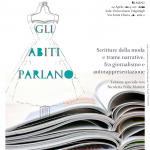
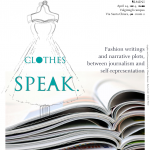



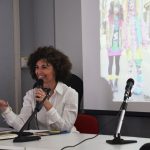

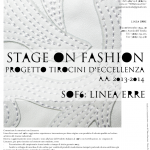 Previous Post
Previous Post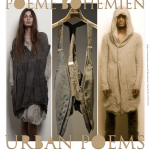 Next Post
Next Post